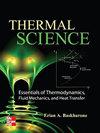一些边值问题近似解的伽辽金方法
IF 1.1
4区 工程技术
Q4 THERMODYNAMICS
引用次数: 0
摘要
本文利用伽辽金方法求一些边值问题的近似解。求解过程需要求解一个代数方程组,这些方程组体积大,求解难度大。根据Groebner基理论,提出了一种改进的Buchberger算法来求解代数系统。结果表明,伽辽金方法简单、有效。本文章由计算机程序翻译,如有差异,请以英文原文为准。
Galerkin approach to approximate solutions of some boundary value problems
This paper uses the Galerkin method to find approximate solutions of some boundary value problems. The solving process requires to solve a system of algebraic equations, which are large and difficult to be solved. According to the Groebner bases theory, an improved Buchberger's algorithm is proposed to solve the algebraic system. The results show that the Galerkin approach is simple and efficient.
求助全文
通过发布文献求助,成功后即可免费获取论文全文。
去求助
来源期刊

Thermal Science
工程技术-热力学
CiteScore
2.70
自引率
29.40%
发文量
399
审稿时长
5 months
期刊介绍:
The main aims of Thermal Science
to publish papers giving results of the fundamental and applied research in different, but closely connected fields:
fluid mechanics (mainly turbulent flows), heat transfer, mass transfer, combustion and chemical processes
in single, and specifically in multi-phase and multi-component flows
in high-temperature chemically reacting flows
processes present in thermal engineering, energy generating or consuming equipment, process and chemical engineering equipment and devices, ecological engineering,
The important characteristic of the journal is the orientation to the fundamental results of the investigations of different physical and chemical processes, always jointly present in real conditions, and their mutual influence. To publish papers written by experts from different fields: mechanical engineering, chemical engineering, fluid dynamics, thermodynamics and related fields. To inform international scientific community about the recent, and most prominent fundamental results achieved in the South-East European region, and particularly in Serbia, and - vice versa - to inform the scientific community from South-East European Region about recent fundamental and applied scientific achievements in developed countries, serving as a basis for technology development. To achieve international standards of the published papers, by the engagement of experts from different countries in the International Advisory board.
 求助内容:
求助内容: 应助结果提醒方式:
应助结果提醒方式:


